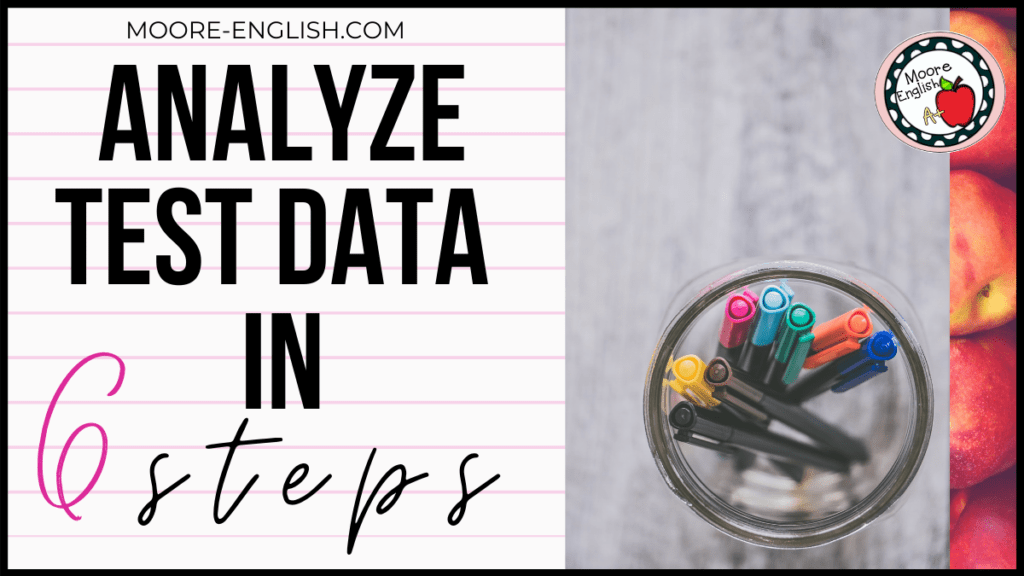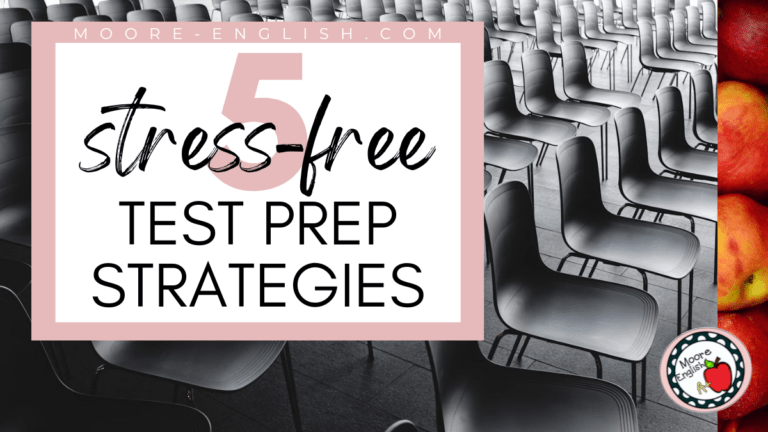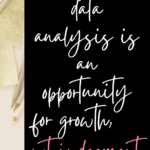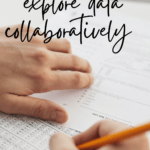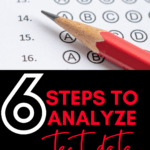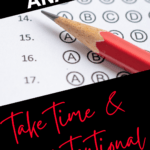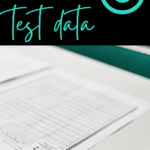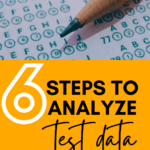For the past week, we’ve been talking about how to use classroom data: with students, with co-workers, and with parents. Well, this week my students are taking their first tests of the year. My juniors will test over The Great Gatsby. And my sophomores will test over To Kill a Mockingbird.
By the end of the week, I will have solid summative data on all of my students. And after I spend some time with that data, I will be able to resort my small groups, focus on standard or skill-specific minilessons, and will be able to make revisions to both instruction and assessment going forward.
But that wasn’t always the case. As a new teacher, I had no idea what to do with test data. Sometimes I printed it and considered the questions we missed the most frequently. But often times I just recorded scores, put them in the grade book, and moved on to the next unit. However, there is lots of valuable information in test data, so I’ve developed these best practices.
This post this post may contain affiliate links. Please read the Terms of Use.
Starting to Analyze Test Data
6. Take time with data, and be intentional in your approach to data. One of my earliest mistakes with data was thinking that I could look at student test data and at most-frequently missed questions and that was enough. While student test scores are valuable, and while it is important to look at the most-frequently missed questions, there’s a lot more to be found in data.
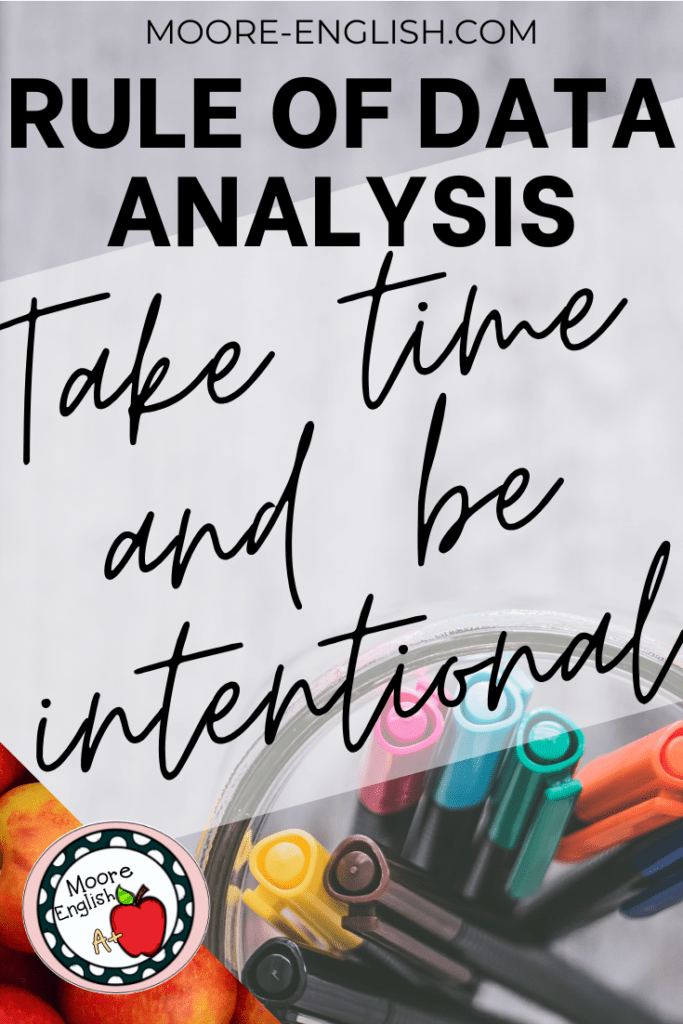
- In particular, I now look specifically at slam dunk questions–items on which 85%+ of students excelled. Why are these questions valuable? Because they provide insight into skills and content I am teaching well.
- Additionally, I also consider which standard(s) a question assesses and if that standard(s) has been an historical problem for this group of students. If the standard or skill is a growth opportunity for this group of students, I consider Tier 1 and 2 interventions, mini-lessons, or re-teaching opportunities I can implement right now.
- Further, I also consider if this standard or skill is an historical weakness for this and past groups of students because this may point to a gap in the curriculum or a gap in my instruction, which suggests that, in the future, I can try to intervene on this standard or skill before giving students a summative assessment.
- Finally, I consider middle-of-the-road questions. These are questions on which 70-75% of my students did well. In assessment terms, that means the class did C-C+ work on these questions. With these kinds of questions, I’m interested in what clicked for 70-75% of students and what didn’t click for 25-30% of students. This is where reflection comes into play, and this is where I might invite colleagues or instructional coaches into the conversation.
Engage Test Data Collaboratively
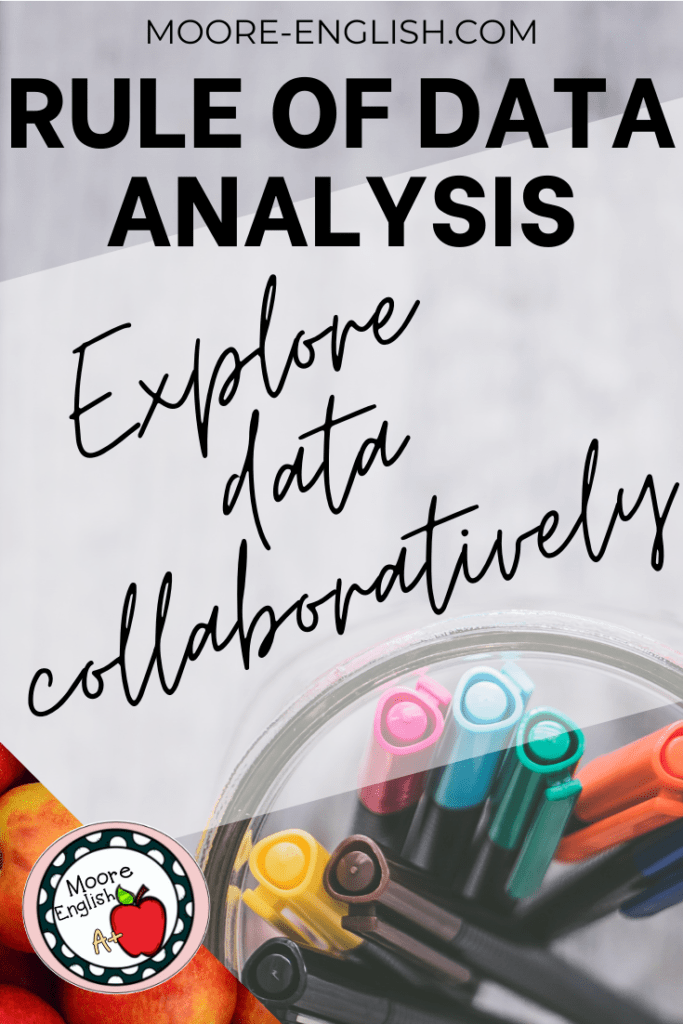
5. Explore data collaboratively. Invite co-workers or instructional coaches into the conversation. This is especially true if you’re looking for alternative ways to present content or skills. If my students did poorly or middle-of-the-road on a question, I know they can do better, and I know I can do better for them. This presents a great opportunity for asking my peers for suggestions, tips, and feedback.
- Sometimes this is as simple as sharing a lesson: try x instead of y.
- Other times, I might invite a colleague into my classroom for an #observeme focused on a particular skill, say wait time or use of high-level questions.
- Still other times, I might look to our instructional coach to guide me through an instructional cycle focused on a skill I’m interesting in improving.
These kinds of data-driven conversations require vulnerability. But they are worth it! Working without collaboration is like working in an echo chamber.
Furthermore, working collaboratively can confirm or validate my data. If the majority of sophomores in English II struggled with similar concepts, we know that we have to intervene on that concept earlier, need to reteach the concept now, and will revisit the curricular spiral in the near future so we don’t have the same problem later.
Approach Test Data with a Goal

4. Have a goal for data analysis. As with most reflective practices, a goal can always provide meaningful guidance and can prevent you from feeling overwhelmed. The goal can be as general as you’d like. How did students adapt to open-ended questions? Or as SMART as you’d like.
For me, I approach data with two questions in mind: what insights can I implement tomorrow? And what insights can I implement next time I teach this lesson? One goal focuses on this group of students and how I can help them grow, learn, and achieve. The other goal focuses on the next group of students and how I can learn from this experience to improve the future.
Adjustments and Revisions
3. Make formative adjustments and summative revisions. As department chair, I often see teachers approach data analysis with the mindset that if students struggled on a test, the test must be at fault. While tests do sometimes need revisions (because they’re not standards-based, not developmentally appropriate, or include a typo), oftentimes this instinct comes from fear.

Data analysis should not be a gotcha. Data analysis is an opportunity for growth, not for judgement. Instead of revising the test, consider revising the pedagogy.
What concepts or skills did students miss? What needs to happen in order for students to successfully “get” those concepts or skills? If, as a teacher, you can answer these two questions, you can make meaningful adjustments for students right now.
Before the next summative assessment, make some adjustments in instructional practices. Consider how your formative assessment prepares students for the summative and how formative assessment is being used to determine student preparedness for the summative. If you make a formative change today, you might be able to save yourself the headache of summative revision later.
Finally, if the summative truly needs revision (and it might), develop a plan and timeline for making those revisions before teaching this unit again in the future.
The Most Important Rules of Data Analysis
2. Don’t take data personally. Because teachers work so closely with students, we can take their data personally. I’ve written about this before, but it’s worth repeating.
1. Use data as guidance but not as the law. Ultimately, you know your students, your classroom, and your strengths as a teacher. No amount of data can replace relationships in the classroom. For this reason, it’s important that teachers use data to guide them. But don’t pledge allegiance to your data, either. Balance data analysis with relationship building, and you will be successful.
What other suggestions do you have for teachers digging into test data? Let us know in the comments.


Photo Credit: Photo by Jessica Lewis on Unsplash

